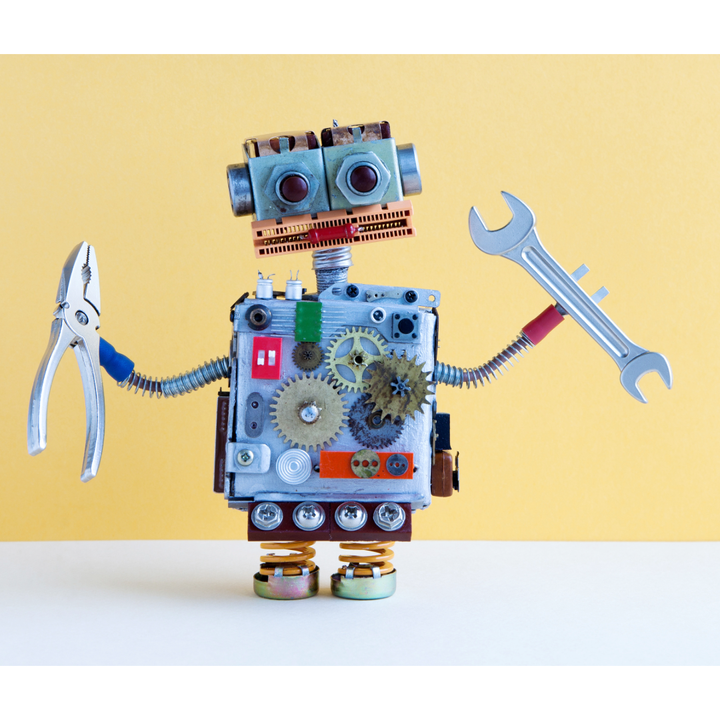AI Innovations Shaping the Future of Government, Society, and Business
Open-source frameworks are fueling an unprecedented surge in AI innovation, reshaping industries from political campaigning to government operations while redefining how startups, recruitment, and even conversational companionship evolve in the digital age.
Open-Source: The Competitive Edge in AI
In the midst of an industry edging towards a trillion-dollar valuation, experts like Alfred Chuang emphasize that embracing open-source practices isn’t just a matter of technology—it’s a philosophical pivot. Open-source AI democratizes access to advanced algorithms, which in turn dismantles the monopoly of proprietary systems. This approach encourages developers from diverse backgrounds to contribute ideas, experiment with enhancements, and ultimately drive the evolution of robust AI capabilities. Historical parallels can be drawn with early computing movements; much like the personal computer revolution that emerged from open standards, the current AI wave stands to benefit immensely from a culture of openness.
Research and anecdotal evidence point out that companies integrating open-source components often display accelerated innovation and diversity in products. More than just an operational strategy, the open-source model infuses transparency into the development process. Independent audits can detect and mitigate biases that might otherwise creep into closed systems. As Fortune’s coverage suggests, this shift towards conventional openness creates an ecosystem where technological advancement remains accountable to the public interest.
"Artificial intelligence is the future, not only for Russia but for all humankind."— Vladimir Putin, AI in Russia: Perspectives and Challenges
It’s the kind of innovation landscape that not only sparks healthy competition but also unleashes creative potential across sectors—from healthcare to finance, and even public safety. In light of these developments, several recent pieces on AI.Biz, including our piece on robotaxis and AI companionship, stress the importance of an open environment that nurtures grassroots experimentation and adaptation.
Ethical Boundaries and Regulatory Measures in the Age of AI
While open-source is championed as a boon for innovation, the AI landscape is also witnessing robust debates on ethics and regulation. In Georgia, Senate Bill 9 shines a spotlight on the deceptive potential of AI-generated content in political advertisement, marking this as an era replete with legal and ethical quandaries. Lawmakers are working to ensure that any AI-generated audio or visual content in campaigns explicitly signals its artificial origins. By mandating clear disclaimers, the goal is to maintain electoral integrity and foster public trust.
Yet, this regulatory push is layered with complexity. Critics warn that overly stringent rules could limit free speech and edge society towards more centralized control of digital content. This fine line between safeguarding democracy and stifling innovation is a recurring theme in modern tech discourse. As reported by Online Athens, lawmakers like Rep. Brad Thomas argue that transparency in AI use is crucial to protect the decision-making process of voters against the backdrop of rampant digital manipulation.
Comparatively, similar regulatory efforts have been initiated in other jurisdictions, prompting reflections on how digital manipulation and political messaging intersect in today’s technologically saturated world. With such debates gaining momentum, parallels can be drawn with earlier eras of media regulation, reminding us that every technological leap is invariably accompanied by a recalibration of legal and ethical norms.
Government Adoption: Challenges and the Road Ahead
The implementation of AI within government structures is proving to be as challenging as it is promising. The United Kingdom’s ambitious AI programs within the public sector have been hampered by outdated legacy systems, uneven data quality, and a stark shortage of digital skills, as documented in Computerworld’s analysis. Behind every technological revolution lies the complexity of integrating new systems into old infrastructures, and when it comes to AI, the hurdles are both technological and cultural.
Departments grappling with antiquated systems face issues akin to performing high-stakes surgery with blunt tools, making the need for comprehensive reforms urgent. The struggle is compounded by an "AI oligopoly," where a handful of tech giants dominate the market, raising concerns about cost savings and innovation. For instance, the Open Cloud Coalition has long warned that monopolistic practices could deter competition, echoing a chorus from the cloud computing days.
Government initiatives in the United States further underscore this narrative. Recently, North Carolina announced a collaborative pilot program with OpenAI to leverage AI for optimizing financial records and unclaimed property data. Treasurers like Brad Briner are enthusiastic about the potential efficiency—reportedly saving employees up to an hour and a half daily through automation—without jeopardizing job security. As detailed on WBTV, this strategic move is designed to empower employees rather than replace them, ensuring that technological adoption translates into improved public service.
Despite these promising steps, the path to digital transformation in government is fraught with critical challenges—challenges that remind us of the importance of balanced and inclusive reform. As AI continues to merge with public services, detailed studies like those from the UK government review suggest that a unified strategy focusing on updating legacy systems, enhancing data transparency, and upskilling the workforce is indispensable.
Startups and Incubators: A New Dawn of Disruptive Innovation
The vibrancy of the AI industry is perhaps best captured in the thriving ecosystems built by startups and incubators. Seattle’s iconic waterfront now hosts AI House, a dynamic incubator spearheaded by the Allen Institute spinoff, AI2. This innovative hub exemplifies the fruitful marriage of creative vision and technical expertise. Situated at Pier 70, once immortalized by its pop culture legacy in "The Real World," AI House is reinventing the notion of startup culture.
With success stories like that of Martín Ramírez and his startup Signify, which uses AI to streamline compliance across global consumer markets, AI House embodies the transformative potential of AI solutions. The incubator not only nurtures financial success—40 companies valued collectively at over $1 billion—but also fosters a collaborative spirit where experienced professionals join forces with AI experts to tackle real-world challenges.
In a rapidly evolving business landscape, AI is reshaping recruitment practices as well. According to Forbes, AI-driven recruitment is exponentially transforming traditional hiring methods. Algorithms that swiftly scan thousands of applications reduce preliminary screening times drastically while highlighting candidate skills in an unbiased fashion. By simulating real-world work environments, these systems provide invaluable insights into candidate fit, revolutionizing how organizations build diverse and capable teams.
It’s intriguing to see how this intersection of technology and human capital reflects a broader trend of digital transformation. As industries pivot towards a more tech-driven future, startups and recruitment platforms alike are leveraging AI not just to automate but to innovate. For further insights into these trends, our readers might find the series of updates at Amazon’s bold investments in AI startups particularly illuminating.
Reimagining Conversational AI and Digital Companionship
Not every evolution in AI aligns strictly with efficiency or government reform—there’s a growing cultural dimension as well. Crushon AI is pioneering a niche that marries emotional intelligence with digital interactivity, offering NSFW AI companionship that blends safe-for-work interactions with boldly character-driven conversations. This platform has created an ecosystem where over six advanced models, including those based on GPT architectures, power a vibrant community that has developed over two million unique AI personas.
Such advancements are not without their radical approaches. Unlike many conventional platforms, Crushon AI offers two distinct operational modes, ensuring that users can navigate between family-friendly and more liberated interactions. This careful calibration of creative exploration and moral moderation illustrates the delicate balance that modern AI developers must maintain.
As technology increasingly takes on roles that verge on the personal, the debate around digital companionship has become as much about redefining human interaction as it is about leveraging artificial intelligence. The platform’s multilingual support and near-instantaneous response times (as fast as two seconds) demonstrate not only the technical prowess behind these models but also the evolving expectations of users globally. For those interested in exploring the transformative landscape of conversational AI, our coverage on private and uncensored AI innovations continues to offer profound insights.
Bridging the Global AI Landscape: A Call for Inclusive Progress
The trends emerging from these varied segments of the AI ecosystem—open-source platforms, regulatory frameworks, government pilot programs, innovative startups, and transformative recruitment practices—paint a comprehensive picture of the challenges and triumphs of our modern technological era. When we reflect on these developments, it becomes clear that the future of AI is not monolithic. Instead, it is a conglomerate of diverse initiatives and innovative experiments aimed at creating technologies that are efficient, accountable, and socially responsible.
Amid this complex backdrop, it’s essential to acknowledge the role that interdisciplinary collaboration plays in advancing the field. As said in a remark by Claude Shannon, “I visualize a time when we will be to robots what dogs are to humans, and I’m rooting for the machines.” Such visionary statements capture the zeitgeist of our era—a time when technology is no longer a distant concept but an integrated, multifaceted reality influencing every facet of daily life.
Consider the practical implications of these AI applications: on one hand, open-source models will drive competition and accountability in industries as diverse as healthcare, finance, and public service; on the other, robust regulatory frameworks, like Georgia’s Senate Bill 9 or North Carolina’s pilot programs, aim to protect democratic discourse and individual privacy in an era of widespread digital manipulation. This duality highlights that the adoption of AI must be navigated with both enthusiasm and caution.
Furthermore, the continuous evolution of tech hubs such as AI House in Seattle demonstrates that fostering a culture of innovation goes hand-in-hand with nurturing local talent. By providing spaces where startups and established companies can collaborate, the AI community is actively dismantling barriers that previously hindered creativity and progress.
Importantly, these advances are also intertwined with societal shifts. AI-powered recruitment systems, for instance, are beginning to challenge and redefine traditional hiring practices. As organizations increasingly lean on algorithm-driven assessments, the emphasis is shifting from a candidate’s network to the genuine potential evidenced through a data-driven evaluation of skills and experiences.
At the same time, initiatives like the NSFW AI companionship platform from Crushon AI underscore how digital experiences can cater to nuanced aspects of human emotion and relationship dynamics, a field once thought to belong solely to the realm of science fiction. This ongoing dialogue between technological capability and human need is what makes the current moment in AI history so significant.
The future trajectory of AI, therefore, depends on an interdependent ecosystem. The adoption of open-source protocols ensures that innovation remains unbridled, while measured regulatory approaches safeguard against its potential misappropriations. As governments wrestle with integrating new technologies into aging infrastructures and outdated systems, and as startups continue to harness the transformative power of AI to disrupt traditional business models, one thing is clear: inclusive, transparent, and forward-thinking practices will be the cornerstone of sustainable progress.
For readers keen to explore further, additional insights into these developments can be found in our other articles on AI.Biz. For example, our update on innovation and security in the digital age provides a deep dive into how governmental bodies are grappling with the challenges of modern technology, while our coverage on big tech investments highlights the financial momentum behind advanced AI applications.
Reflections on the AI Revolution
Walking through the corridors of modern innovation feels remarkably similar to reading the pages of a contemporary epic—a narrative marked by triumphs, essential debates, and the slow, deliberate pace of institutional change. Whether it’s the call for an open-source renaissance, the legislative maneuvers aimed at preserving democratic integrity, or the startup innovations lining the streets of Seattle, the evolution of artificial intelligence brings forth a myriad of opportunities and responsibilities.
The road ahead is one of promise tempered by caution. As we develop and deploy AI technologies, the importance of transparency, inclusivity, and ethical foresight cannot be overemphasized. We are witnessing, in real time, a redefinition of digital relationships, work dynamics, and governmental functions, each transformation building upon the data and decisions of the past. Just as early pioneers laid the foundations for the modern internet, today’s AI developers and policymakers are laying the groundwork for an even more interconnected world.
This journey of transformation is not a solitary path but a communal effort that blends insights from academia, industry, and even the nuanced perspectives of creative digital communities. It encourages us to critically examine not just the breakthroughs but also the societal implications of an AI-driven future, ensuring that technology remains a tool that serves humankind in a balanced and ethical way.
In this transformative period, every innovation carries with it the collective hopes of societies eager to harness technology for good, while simultaneously remaining vigilant against the pitfalls of unmoderated power. Whether you're a developer, a policy-maker, or simply a curious observer, there's a part for everyone in this ongoing dialogue—a reminder that the journey of artificial intelligence is as much about who we are as it is about what we create.




Comments ()